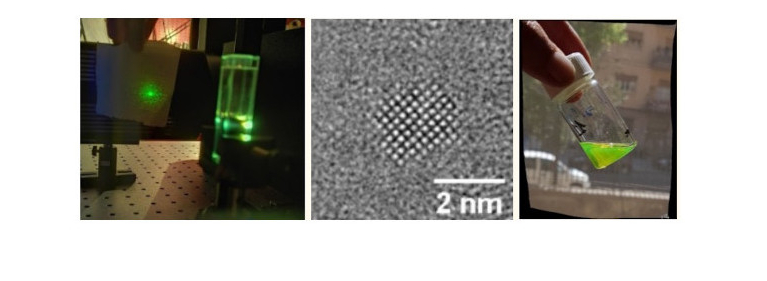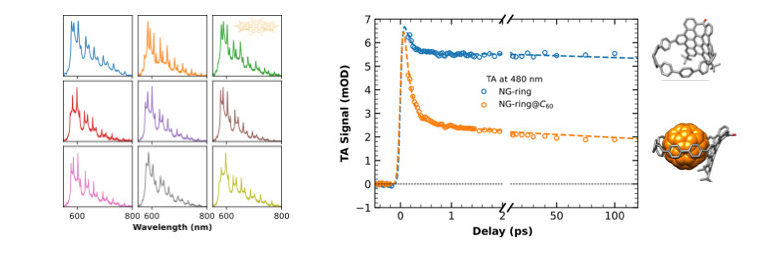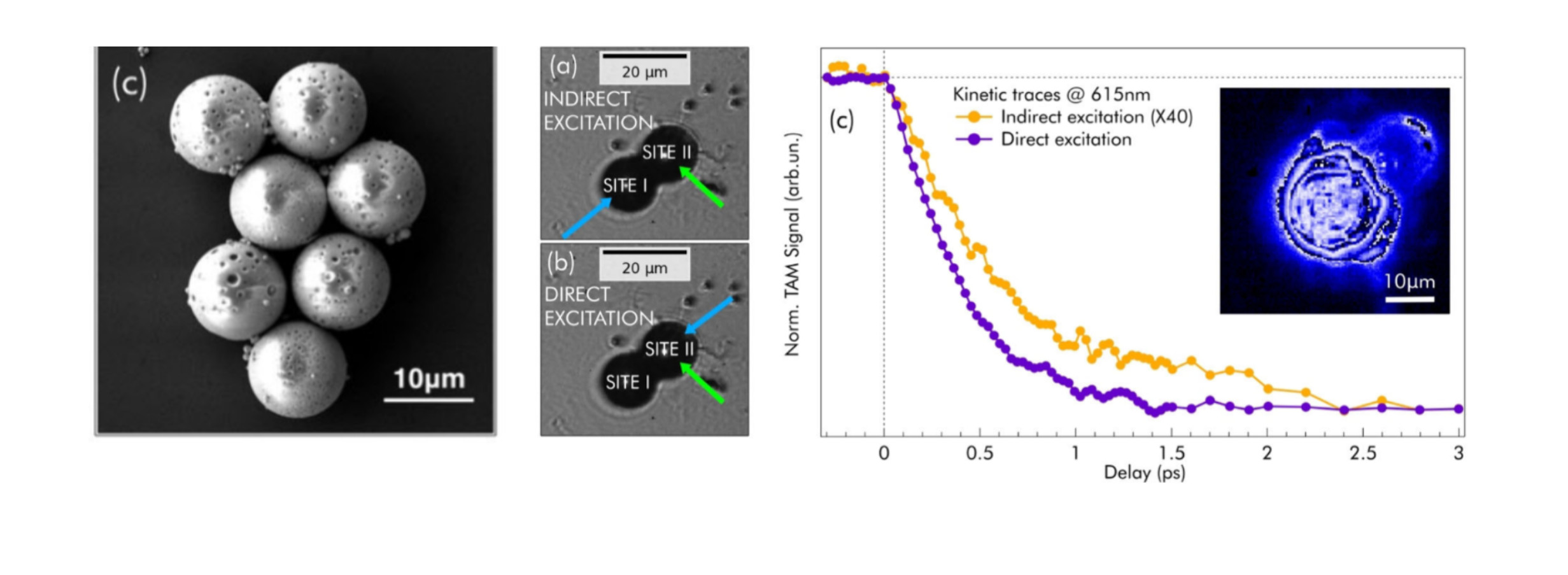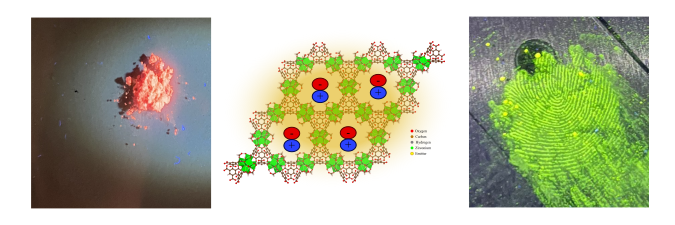We are interested in unraveling the optical response and leveraging the photonic properties of specific physico-chemical systems of high interest in material science. We have a particular interest in addressing dynamical processes occurring on the sub-nanosecond time scales, such as exciton and charge carrier relaxations, charge and energy transfer processes. Feel free to contact us to discuss collaborative experiments and projects. At the moment, we are mostly working on the following target systems.





